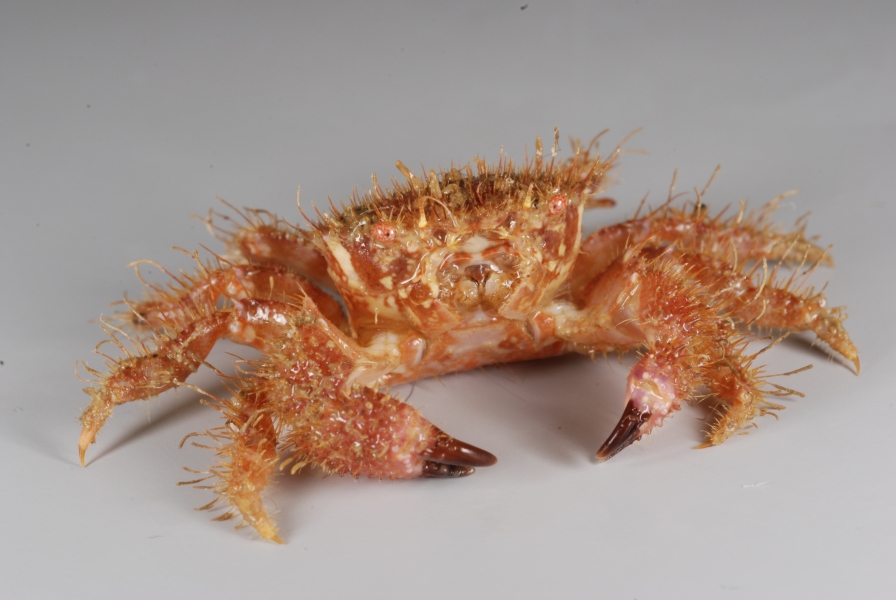Never complain about a bad hair day again! This week’s crab arguably gives more the impression of disbelief than grump, but we love the ‘head shots’ our talented photographer Chazz Marriott produces at sea.
Let us introduce you to Pilumnus novaezelandiae, with the very fitting common name ‘bristled black-finger crab’. These bunches of longer coarse hairs (setae) give the crab a distinctive appearance and make is easily distinguishable from the closely related species Pilumnus lumpinus, which is much more evenly coiffed.
Pilumnus novaezelandiae can be found from the low intertidal to 130 m and hides under boulders and in rock crevices in sheltered harbours and on wharf piles all around New Zealand. It can be found in large numbers and is considered gregarious, perhaps as a consequence of its unusual reproductive strategy (see fun fact below).
It’s not a large species, with a carapace width of up to 20 mm.
Fun fact: Pilumnus novaezelandiae has a much abbreviated development. Eggs are few in number and very large. The larval stage (megalopa) hatches from the egg and young are carried by the female until they moult into the first crab stage. While it is common for freshwater decapods to provide parental care for juveniles, this behaviour is very rare among marine decapods (1). References: 1) Referceen: McLay (1988) Brachyura and crab-like Anomura of New Zealand:
https://researchspace.auckland.ac.nz/handle/2292/3450

